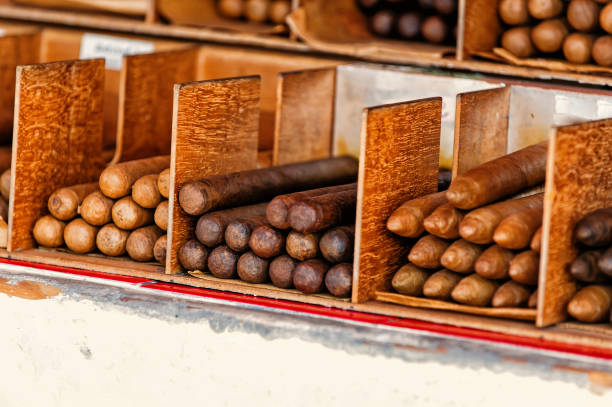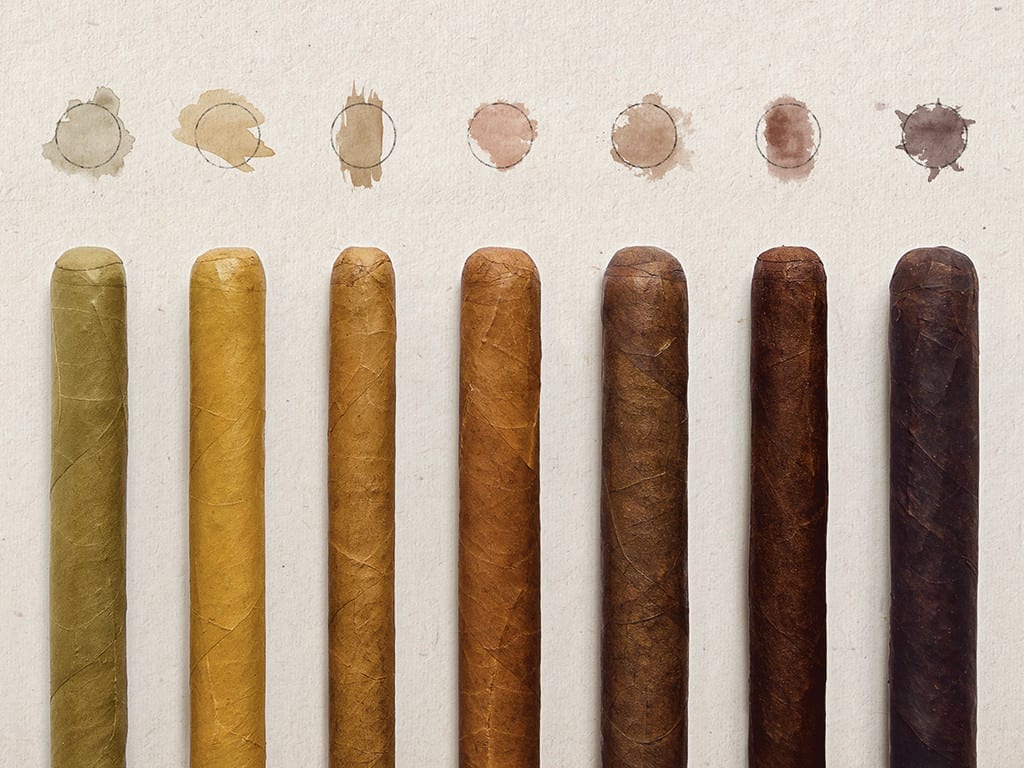Are you a cigar aficionado? Do you want to learn more about the nuances of different cigar shades and colors? Are you interested in what makes each cigar unique? If you answered yes to any of these questions, this blog post is for you! Read on to learn more about premium cigars’ diverse range of colors and shades.

The Different Shades of Cigars
When it comes to cigar wrapper colors, seven shades are universally accepted. This is known as the Colorado scale, and it ranges from the lightest shade of Candela (also known as Double Claro) to the darkest shade of Oscuro. In between these two ends of the spectrum are the shades of Claro, Colorado Claro, Colorado, Colorado Maduro, and Maduro.
These seven shades of wrapper color can be further broken down into an infinite number of hues and tints. To help you understand the nuances in color, think of the cigar wrapper rainbow – with Claro being the lightest and Oscuro being the darkest.
Light colors:
The wrappers that are light in color do not offer any additional flavor to the cigar, allowing the smoker to enjoy the full flavor of the filler tobacco. These include:
- Double Claro is the lightest color, being a light green. The color is set by its quick drying process, which locks in the leaf’s chlorophyll. Due to its light color, it has the lightest and driest flavor.
- Claro is light tan as the leaves are grown under the shade of cheesecloth. Further, it is picked early and allowed to air dry for its curing process. Because of its curing process, this leaf offers no flavor, allowing the filler tobacco to be enjoyed.
Medium Colors:
These wrappers offer a mild background flavor to the filler tobacco complimenting the main flavor of the cigar. Such wrappers in this category:
- Colorado Claro is light brown, a shade darker than the claro itself. This color is most often used with African tobacco. It also allows the filler tobacco to take center stage.
- Colorado is in the middle of the scale of colors ranging from medium brown to reddish brown. The tobacco is grown in the shade and cured until it reaches the proper color. The color lends a subtle flavor to the filler tobacco.
- Colorado Maduro is dark brown, the color of the wood. Because of its curing process, this color offers a medium-rich flavor that blends well with the filler tobacco, making the enjoyment of the cigar a bit richer than a lighter color.
Dark Colors:
Dark-colored wrappers have a flavor of their own. The cigar itself is often made with the same tobacco as the wrapper. These dark colors are known as:
- Maduro is a very dark brown color. The leaf is left on the plant longer, then cured or cooked longer under pressure. The Maduro color offers a sweeter taste to the smoke of the cigar.
- Oscuro is the darkest of the colors, black. The top leaves are left on the plant for as long as possible before it is fermented and cured. The curing process turns the leaf black in color and leaves a rough texture.
Color is a good starting point to help determine which cigar to enjoy. A general rule of thumb, the lighter the color, the milder the flavor.
Regarding wrapper colors, it’s important to remember that cigar wrappers are not dyed or painted. Instead, the color of the wrapper is achieved through the curing and fermentation process. Cigars with natural wrappers will range in color from Claro to Colorado Rosado, while Maduro wrappers come in a variety of darker shades.
It’s also important to note that the color of the wrapper can be an indication of the flavor of the cigar. Lighter color wrappers tend to be milder in flavor, while darker wrappers usually produce a full-bodied smoke with more intense flavors.

The Role of Color in the Flavor of a Cigar
Cigar color is more than just an aesthetic consideration. The shade of the wrapper can also affect the flavor of the cigar. For example, darker wrappers provide a more robust smoke, while lighter wrappers offer a milder flavor.
The type of tobacco used in the wrapper also plays a role in the flavor of the cigar, with some wrappers providing a spicier or sweeter smoke than others. The fermentation and aging of the wrapper also influence the cigar’s flavor.
The Significance of Darker Wrappers
Regarding cigars, darker wrappers are usually associated with a bolder flavor. This is because the higher levels of flavor and oils present in these wrappers create a richer, more intense experience. The longer fermentation process that produces darker wrappers contributes to their robust flavor.
Also, darker wrappers tend to be more aromatic than lighter wrappers. This is because the different fermentation process allows more oils to be released into the air, creating a distinct and pleasing aroma. Darker wrappers are also known for creating a bold draw, which is why they’re often sought after by cigar lovers.
Light-Colored Wrappers and Their Influence
Light-colored wrappers are often associated with a milder flavor. The color of the wrapper is usually an indication of the flavor that the cigar will have. For example, a Candela wrapper is known to be the lightest wrapper and is usually associated with a milder flavor. Claro wrappers are also light but are a bit more flavorful than a Candela wrappers.
Colorado Claro wrappers are a bit darker than Claro wrappers, but they are still lighter. These wrappers are known to have a bit more flavor than Claro wrappers. Colorado wrappers are slightly darker than Colorado Claro wrappers and are known to have a bit more flavor and complexity than their lighter-colored counterparts.
Factors That Affect the Color of a Cigar
When it comes to understanding the color of a cigar, several factors contribute to its shade. The most important of these is the curing process of the tobacco leaves. During this process, the leaves are exposed to various temperatures, humidity levels, and airflow. Different levels of these elements will ultimately determine the shade of the cigar wrapper.
The location of the tobacco-growing region will also influence the color of the wrapper. For example, Cuban tobacco has a unique shade that is different from that of other regions. This is due to the climate and soil in which it grows.
In addition, the aging process can also affect the color of the wrapper. The longer a cigar is aged, the darker the wrapper will become. This is because the natural oils found in tobacco will be oxidized during the aging process. This produces a darker color that is often associated with a richer flavor.
Finally, the wrapper leaf itself will also have an impact on the shade of the cigar. Different wrappers can produce vastly different colors, ranging from light green to black and many shades in between. It is important to understand each type of wrapper and how it contributes to the overall color of the cigar.
Conclusion
Choosing the right cigar based on its color and shade is an important part of the cigar smoking experience. By understanding the various shades and colors of cigars, you can select the right cigar to match your individual preferences.
The color of the wrapper can be a great indicator of the flavor profile of the cigar, and can help you find the perfect smoke for you. From Claro to Oscuro, each shade provides its unique flavor profile, and can make all the difference in the world regarding the overall taste of a cigar.
It is important to remember that the color of a cigar is not the only factor to consider when looking for the perfect smoke – the construction, flavor, and strength of a cigar are all important factors to consider as well. Ultimately, it is up to the smoker to decide which cigar is right for them – but understanding the colors and shades of cigars can help you make an informed decision.

jay
Self proclaimed cigar expert. I've been smoking since 2010. I've practically lived at a cigar lounge from 10am to 10pm and trying every new cigar that came out for years.

